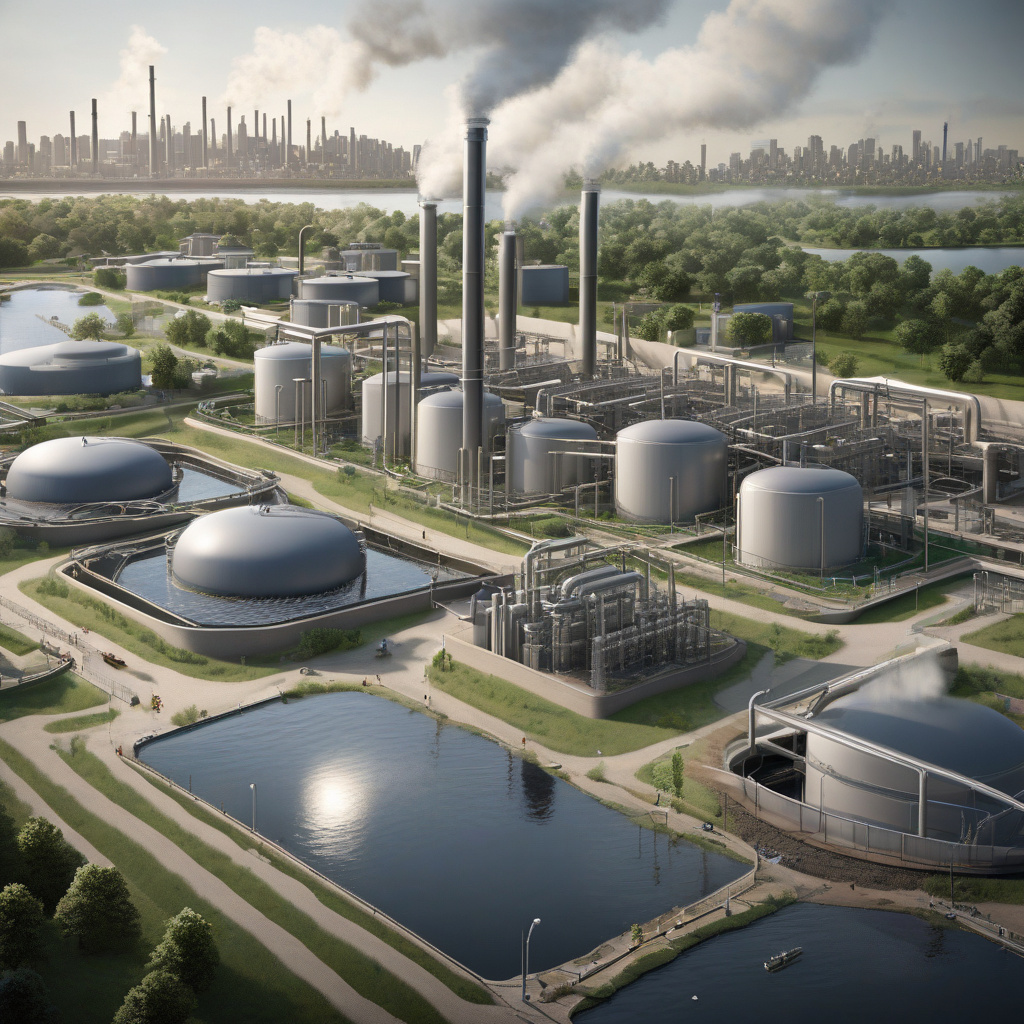Wastewater Plants’ Greenhouse Gas Emissions Exceed Estimates, US Study Reveals
A quiet source of pollution has turned out to be much louder than expected. Wastewater treatment plants, often overlooked in discussions about greenhouse gas emissions, have been found to be significant contributors to methane and nitrous oxide in the atmosphere, according to a recent study conducted in the United States.
The study, led by researchers from the University of California, Berkeley, measured the levels of methane and nitrous oxide emissions from 19 wastewater treatment plants across the country. The results were startling – the emissions of these two potent greenhouse gases were found to be far higher than previously estimated.
Methane and nitrous oxide are particularly concerning because of their high global warming potential. Methane, for instance, is over 25 times more effective at trapping heat in the atmosphere than carbon dioxide over a 100-year period. Nitrous oxide, on the other hand, is nearly 300 times more potent than CO2. This means that even small amounts of these gases can have a significant impact on global warming.
The primary sources of methane and nitrous oxide emissions from wastewater treatment plants are the treatment of organic matter and the use of nitrogen in the treatment process. When organic matter, such as human waste and food scraps, is broken down by bacteria in the absence of oxygen, methane is produced. Similarly, the use of nitrogen to remove pollutants from wastewater can lead to the release of nitrous oxide.
One of the key findings of the study was that the emissions of these greenhouse gases were not uniform across all plants. Some facilities had much higher emissions than others, indicating that there is room for improvement in terms of reducing emissions.
So, what can be done to address this issue? One potential solution is to invest in infrastructure upgrades that can capture and utilize methane emissions. Methane capture systems, commonly used in landfills, can be adapted for use in wastewater treatment plants to trap methane and convert it into energy. This not only reduces greenhouse gas emissions but also produces renewable energy that can help power the plant.
In addition to infrastructure upgrades, improving the efficiency of the treatment process itself can also help reduce emissions. By optimizing the use of oxygen in the treatment process and minimizing the use of nitrogen, wastewater treatment plants can lower their overall greenhouse gas footprint.
Furthermore, increasing public awareness about the environmental impact of wastewater treatment plants can also drive change. By educating the public about the connection between wastewater treatment and greenhouse gas emissions, there may be increased pressure on plant operators to prioritize emission reduction efforts.
In conclusion, the study’s findings shed light on a previously underestimated source of greenhouse gas emissions. Wastewater treatment plants play a significant role in contributing to methane and nitrous oxide levels in the atmosphere, underscoring the need for immediate action to address this issue. By investing in infrastructure upgrades, optimizing treatment processes, and raising public awareness, we can work towards reducing the environmental impact of these essential facilities.
greenhouse gas, wastewater plants, emissions, methane, nitrous oxide












